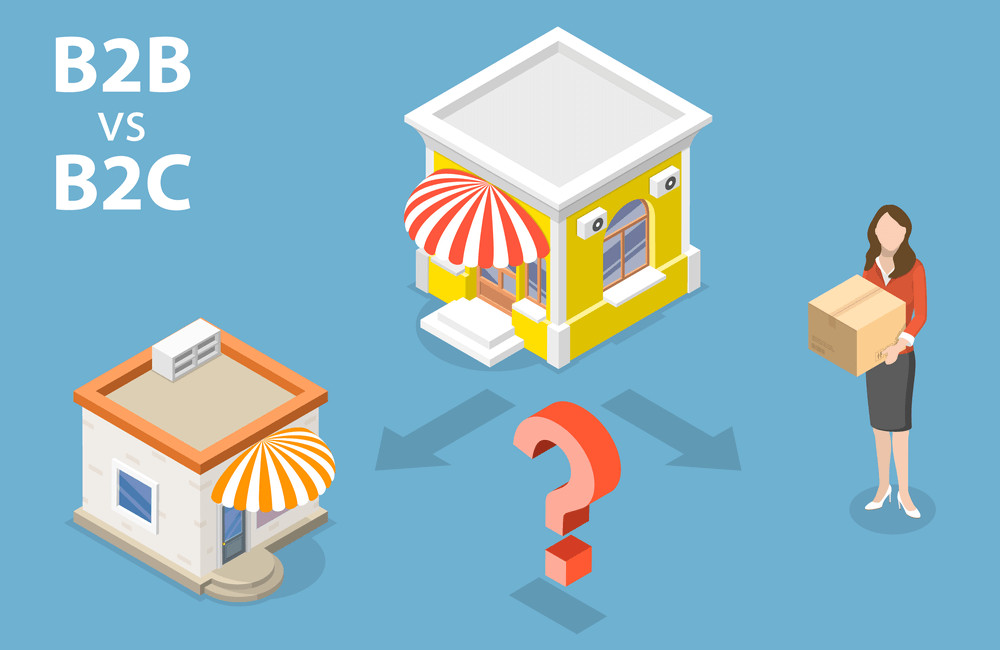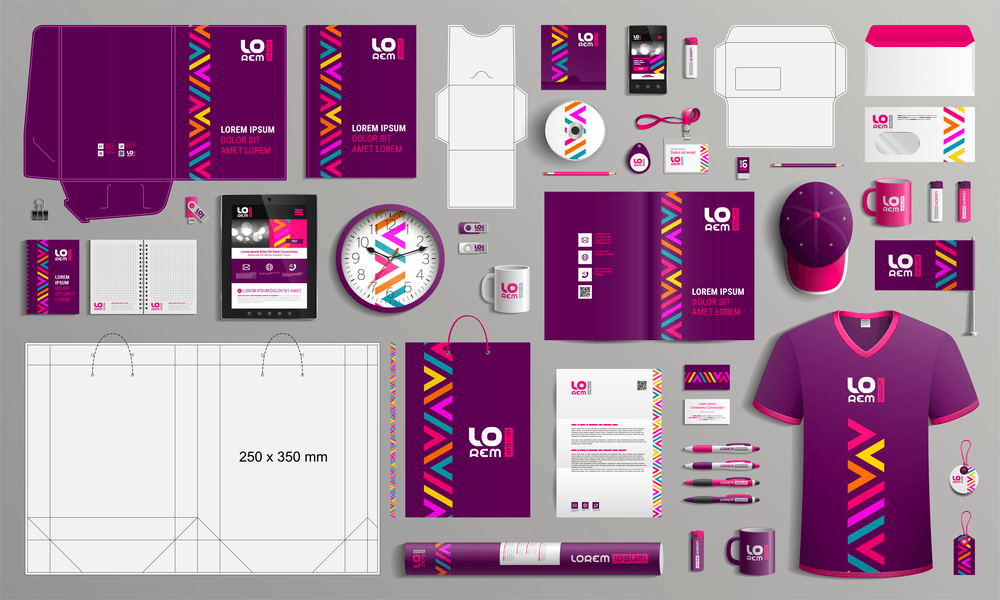Manufacturing Branding – Marketing ABC for Small Manufacturers
Branding your manufacturing company could be the difference between success and staying afloat. Here is why and how you should develop a brand and use it to market your manufacturing business.

You can also listen to this article:
Why should manufacturers do branding?
SME manufacturers, especially B2B businesses that produce goods for other companies, are notoriously lackluster when it comes to marketing. It is a serious industry and marketing is often seen as something frivolous and overly expensive. But regardless of whether you sell B2C, D2C, or B2B, the right manufacturing branding and marketing strategies could make the difference between staying afloat and being successful.
Coca-Cola, Apple, Nike, Mercedes-Benz, Intel – all of these global, instantly recognizable brands were once small manufacturers operating from a single facility. While it is true that their products have always stood out from the competition, they have also concentrated on building a strong brand and using it to their advantage in their marketing efforts. They started by making great products and telling stories about them, and became legends doing that.
Telling stories is something that is absolutely unique to humans compared to other life forms on the planet. Stories are intrinsic to the human experience, we are guided by narratives even in our everyday lives. It is how we learn, how we communicate and connect with others, how we understand and make ourselves understood. The power of stories in unfathomable.
And with a little bit of consistency and work, that power can be harnessed for business purposes.
Brand marketing myths debunked
Even though it is still often associated with dishonesty, good marketing has nothing to do with lying. In fact, lying is the worst marketing decision you could ever make in our age of readily available information. It can kill your reputation in only a short time. What you can do, however, is decide how to present yourself and your products while still remaining credible.
The other thing manufacturers are often concerned about is the cost of marketing. Of course, advertisements on traditional media like print newspapers, TV, and radio are still too expensive for small manufacturers to be used consistently. But the internet has done a lot for leveling the playing field, providing platforms like social and digital media where advertisement costs are much lower or even nonexistent.

The benefits of manufacturing branding
Branding a manufacturing business takes a lot of work but when it is done right, it can also contribute a lot. Here are some of the benefits that a manufacturer can reap with proper branding.
Brand recognition
Being obscure is a concern any way you look at it. Branding is what makes products recognizable by giving them a visual, verbal, and conceptual identity that would emphasize your company and its values, thereby helping it stand out from the competition. Ideally, manufacturing branding takes you to the point where a potential client hears your company’s name and already knows what you do.
And the best-case scenario? Your company becomes synonymous with the type of products it offers (like Google has done with search engines, Coke with cola drinks, and Post-Its with sticky notes).
Brand awareness and loyalty
A step further from brand recognition, brand awareness means that a potential customer does not only know what you produce and what your logo looks like – they know what your products are capable of and even what your company values are.
This, in turn, creates brand loyalty – fans of your products that do not even care to weigh other options and are always interested in new products. A good example of this would be Apple enthusiasts. But do not be deterred by the hugeness of great brands because awareness can also be created on a much smaller scale.
Increase in demand
If the market is aware of your product and you have efficiently communicated the advantages of using your product, demand for it will naturally increase. Customers are more attracted to products they recognize and retailers want to buy in products that will potentially sell well. Having a strong, recognizable brand and products that reflect your company values can drastically increase demand for your products.
More power over distributing
Becoming well-known as a brand will also give you the chance to become more independent from agents, retailers, or other distributors. First, as your brand becomes more recognized, distributors will become willing to pay more for your products. Secondly, instead of going shopping for your products, customers would also start coming directly to you, allowing you to sell your products on your own terms.
Larger margins and profits
All of those previous manufacturing branding benefits combined will result in more business and more profits for your company as people are willing to pay more for products that they know and trust. Taking more control over distributing by selling directly to consumers will also allow you to get a bigger cut than what you are getting when selling only to distributors.
Learn more about D2C and How to Sell Direct-to-Consumer.
B2B vs B2C marketing
You have probably heard people say that B2C purchase decisions are made based on quick emotion and B2B purchase decisions are the results of long logical thinking. This is only somewhat true.
One of the golden rules in marketing is that whether you are selling B2B or B2C, you are always selling to people. And all people are driven by emotions. In the case of B2B, however, you are often selling to people that also have to “sell” your product to other stakeholders in their company. That means emotions are still in the driver’s seat throughout the process, but logic has put up some road signs and barriers that prevent emotions from diverging too much.
The B2B process is in most cases also much longer than the B2C one as those products tend to be much more expensive and have a much longer life-cycle.
B2B marketing is therefore generally much more level-headed and logic-based than B2C marketing, but creating an emotion either through great storytelling or spectacular customer service goes a long way still.
What applies for both business models is that even though building a product that delivers on your promises is paramount, also catering to emotions helps you build personal relationships with your clients that make them come back to you even if it might not be the most rational (i.e. cost-effective) thing to do.

Building a manufacturing brand
Manufacturing branding is not just slapping a new logo and tagline on your company website. It means consciously and profoundly taking control of the image that your company projects to its customers, and creating your own story.
Chances are that you are not the only player in your niche – but there are certain aspects to your company that make you unique. By determining what those aspects are and finding a way to communicate them, branding helps you differentiate yourself from the competition, to make you stand out. Follow these basic steps to start establishing a stronger brand for your company.
Finding your target audience
The absolutely first thing to do when starting to consciously build your brand is to identify your target audience. You can do the basic work needed by just thinking about who the average person that uses your product is, or by analyzing your existing customer base. Think about:
Their demographic profile:
- location
- age
- gender
- industry
- profession
- level of education
- etc.
Their psychographic profile:
- interests
- values
- hobbies
- etc.
This is called creating a buyer persona and it can be a tremendous help when building your brand and trying to advertise your products in a more affordable and more targeted way.
Competitor research
Next, it would be smart to analyze what your competitors are doing branding-wise. With different market niches, but also in business altogether, there are often brand characteristics that are quite obvious and already widely used and it would do a business no good to emphasize those aspects of themselves.
For example, many B2B businesses pride themselves on making top-quality products and being dependable and personal. When everyone is already using those brand characteristics, you will have to have a very good angle to set yourself apart from others.
Instead, you can look at what others are doing, and then take a different approach.
Establishing a core concept
A core concept is like an axis around which the brand revolves (and evolves). It is the sum of your company philosophy, bringing together your own and your customers’ values and aspirations in a highly compressed manner – in a single sentence, or even just one word.
When you verbalize your brand’s core concept, it becomes much easier to think up marketing strategies and campaigns that would align with your company philosophy and feel like an integrated part of the brand.
For example, a furniture manufacturer could verbalize their core concept as “responsible comforts” and then create campaigns that say they “create modern comforts while being environmentally responsible”, “use locally-sourced materials to make out-of-this-world designs”, “make the world comfy for people and animals”, etc. The point is to have all your messages point to what makes your company great, to your core concept, through different angles.
Creating your brand personality
Now, taking all the previous steps into account, try to picture what your brand would be like if it was a person. You can muster up every little nuance, no matter how small, because the more detailed you are, the more substance your brand personality will have.
You can use brand archetypes to create a basis for your brand character and its story. Archetypes are basic collections of personality traits that can be used to categorize people and characters. These are widely used in psychology and have been found to be very useful in marketing as well.
Setting your tone-of-voice
If you have managed to get an idea of your brand personality, you can create their tone-of-voice in order to start putting words in their mouth. Simply put, the tone-of-voice is the way your brand speaks, the range of vocabulary it uses, its mannerisms, etc. Is it fun and friendly? Serious and concise? Flattering? Provocative? The tone your company communicates with has to align perfectly with its core concept and brand personality. Also, be very aware that proper grammar is essential when trying to look professional.
The tone-of-voice can then be used to create a tagline for your brand, write up your company’s mission and vision statements, and to create all kinds of marketing copy from product descriptions and advertisement copy to social media posts and customer emails.
Creating a visual identity
And last, but definitely not least, create a visual representation of your company. This means not only designing memorable logos that would reflect your company and its values, but also choosing a color palette, creating designs for your website and blog, and everything else that has anything to do with visually expressing your corporate identity.
Be sure to read a little bit about geometrical and color psychology, take a look at what famous brands and other companies in your niche have done, and hire a great graphic designer to produce the materials.

Best marketing channels for small manufacturers
Now when you have established a proper manufacturing brand, you can start communicating with your audience in a more strategically advanced manner. But where should you try to catch your target audience? For small businesses, using traditional marketing channels such as TV, print media, or radio would be way too expensive to do more than once a year. But marketing needs to be consistent in order for it to have an effect on your audience.
Here are the best marketing channels for small businesses with small marketing budgets.
Social Media
Social media platforms are probably the best way to introduce your company to your target audience. You can create a social media page for your business and start posting information about your products
The golden rules of social media for businesses are:
- Keep it short and simple.
- Talk less about your product specifications and more about what your product can do for your customers.
- Use attractive and interesting visual materials along with great, grammatically correct copy.
- Be consistent.
A lot of times companies create a social media page and then start flooding the platform with posts. This is a surefire way to ensure that most of your posts go unread because your posts start to compete with each other for the attention of
a) your followers
b) the social media platform’s algorithm.
Another mistake that companies make is only posting a couple of times a month. This approach does not do them any good either in terms of being in the picture.
Apart from using Facebook and Instagram, companies can also benefit from using YouTube, LinkedIn, or even TikTok.
Most social media platforms also allow for paid advertising. For example, you can “boost” any post you create so it would reach an audience with a specific demographic profile. By using the platforms’ advertising modules, however, you will get access to even more options that would allow for even greater audience targeting accuracy.
Blogging and SEO
A company blog is a great medium for writing about your products and your industry as a whole. The key here is to create content that your target audience would find useful or entertaining. This content will bring relevant traffic to your website and ideally direct a portion of it to your products.
Blogging can also be part of a larger SEO strategy. SEO or Search Engine Optimization means setting up your website so that it would rank higher in search engines such as Google when people search for specific keywords. For example, a bespoke furniture manufacturer would want to rank with keywords such as “bespoke furniture”, “custom furniture”, “living room furniture”, etc. That means their website content has to feature these topics on individual pages (e.g. a page that details their bespoke furniture offering, or a category page for living room furniture).
While the main pages on a company website usually concentrate on the company’s products and offerings, a blog could have information about an array of topics that revolve around their products. For example, a furniture company could write a blog post about interior design tips or different types of wood used in the production of hardwood furniture. This approach would bring in potential customers that are looking to redecorate their home or looking for the best materials for new furniture, giving the furniture manufacturer the chance to introduce them to their brand and products.
What you should never do is to just cram different keywords into your pages – this tactic worked in the past, but today’s search engine algorithms are so advanced that they can detect all kinds of trickery and punish your site for it.
SEO is a real art form and requires a lot of work and patience, therefore it would be feasible to hire an SEO professional to improve your website and to do keyword analysis to find out what keywords people are using when searching for products like yours or topics related to your industry. There are, however, some free tools available that allow you to do some basic work.
Like social media platforms, search engines also offer paid advertisement options that could give you results more quickly, but at a cost.
E-mail is another great way to stay in the picture. Many companies send out weekly newsletters to people that have subscribed to them on the company’s website. These newsletters give out information about new products, special offers, or point the recipients to other media such as new blog posts.
Thanks to new privacy laws, subscription is key in email marketing nowadays. Many countries have made it illegal to use people’s private data (such as email addresses) without their consent. That is why a lot of company websites have a place where people can subscribe to the company’s newsletter in exchange for free templates, coupons, or just the opportunity to get fresh information about new products and offers.
Like with social media posts, emails have to be concise and to the point. The content of the post should reflect in the subject line in the clearest and most attractive way possible. The email itself should be succinct, easy to read, and feature a link to your website along with a call-to-action.
Many service providers today offer email marketing automation solutions that would allow you to easily plan out your whole month’s emails, create triggers that would send out specific emails to clients that have made a purchase or have abandoned their cart in your e-shop, and to segment your contact list and send out emails according to their profile.
Key takeaways
- Manufacturing branding means giving your company a consistent identity that would represent your values and appeal to your target audience.
- When done well, it will increase demand and customer loyalty, giving you more control over the distribution of your products and resulting in bigger profits.
- Whether you sell B2B or B2C, it is necessary to create positive experiences through marketing or customer service in order to bring in more clients.
- The difference between B2B and B2C marketing is that B2B purchasing decisions are also driven by logic in addition to emotion.
- Manufacturing branding requires analyzing both your own company, your target audience, as well as other brands in your niche. A strong brand speaks to its customers in their own language and stands out from the crowd.
- SME manufacturers with small marketing budgets can use free or low-cost digital platforms such as social media, search engines, or e-mails to market their manufacturing brand.
You may also like: What Are Contract Manufacturing and Toll Manufacturing?




